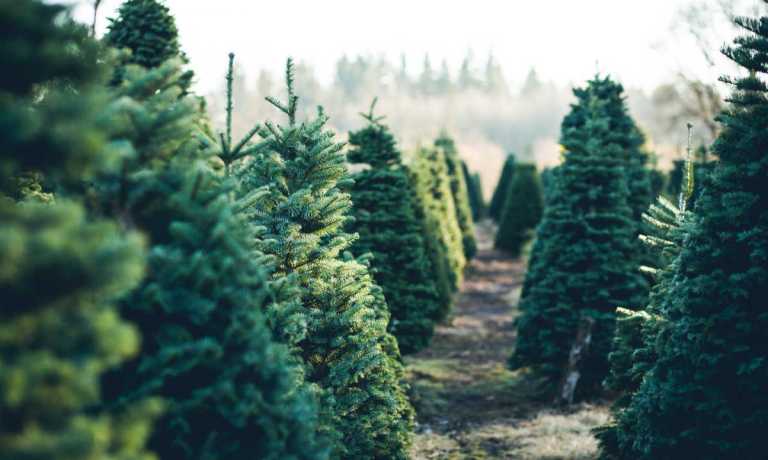Christmas Tree Farm Finds Green in Digital Ordering and Delivery

For most people, a Christmas tree is a bulky, perishable item that is best acquired locally.
But for Wes Brown, founder of the D2C site “A Tree To Your Door,” that is still true, except that he’s replaced “acquired locally” with “acquired easily.”
“I had a retail Christmas tree lot for over 20 years, and then I decided to switch everything online,” Brown told PYMNTS in the wake of his 16th season as the nation’s leading online, full-service tree seller.
“That’s part of why we’ve had success,” he said. “I’m not selling these trees to people in northern Michigan, but you go to California, Texas, Florida, New York, and there are just not as many places to buy a tree so it’s a lot easier to order online, and have it show up at your house,” he said.
In fact, the owner of Lake City, Michigan-based Brown’s Tree Farm says convenience, quality and selection keep customers coming back again and again, causing him to sell out long before Christmas year after year.
Christmas Tree Capital
When he first decided to offer customers the convenience of having a fresh-cut fir appear on their porches, it wasn’t clear if the idea would click, but add in the digital shift, and consumers’ increased comfort — if not preference — for online shopping and the eTree business is here to stay.
It’s a great business, he says, albeit one that, despite its holiday ties, is every bit as exposed to the rigors and bruises of payments fraud, shipping costs, and everything else that goes along with being a digital business selling a living commodity with a shelf life.
“The biggest thing that a lot of people don’t realize is it takes an average of eight to 10 years to grow a Christmas tree. You have to think ahead,” Brown told PYMNTS. Think of it as the ultimate supply chain issue, leaving a goodly amount of unmet demand every year.
He recalled 2020 when A Tree To Your Door sold its last tree early in the season. “People were like ‘why weren’t you more prepared?’ I said, well, we weren’t anticipating this 10 years ago.”
That makes the Christmas tree business a combination of inventory management and forestry management, and part of what inspired tree farmer and Microsoft developer Wes Brown to write his own computer program and become a kind of Amazon of Christmas trimmings.
Starting every October, A Tree To Your Door begins notifying repeat customers — of which it has many — to place their orders. For about 10 weeks after, UPS and FedEx trucks pull up to Brown’s Farm, started 40 years ago by Wes’ dad, to load up boxed trees for direct-to-consumer delivery.
More trees will go D2C, as Brown said the retail Christmas tree lots city dwellers and others knew when young are vanishing due to simple attrition: farmers retiring. “Those spots are just gone now.”
Some 16 years after Brown started his tree delivery operation, others are figuring it out. Instacart announced in early December that “for the first time, Instacart customers can now order fresh-cut trees, artificial trees, and a wide variety of seasonal decor via the Instacart App for same-day delivery from a variety of grocery, wholesale, home improvement, and specialty stores across the country.”
Grinches Really Do Steal Trees
Fans of “How the Grinch Stole Christmas” will recall that he even took the trees of Whoville. Brown said legions of real grinches do this all the time, changing whom he partners with.
A longtime PayPal user, Brown tried someone else in 2020, and the grinches got busy.
“You can get a better interest rate with a regular merchant account, which we did, but we actually had a ton of fraud,” Brown said. “We had a lot of people who would use stolen credit cards, buy the most expensive Christmas tree you can buy with wreaths and stands and all the options. Then a month later I’d get a dispute from the customer saying they didn’t order the tree.”
That cost A Tree To Your Door experienced “thousands of dollars” in fraud that year, so they switched back to PayPal last year. “I didn’t have hardly any fraud, and this year I don’t anticipate having any either.”
Brown said buy button simplicity also goes over well with tree buyers. An older online payment option took customers off the site. He said that was cumbersome, “so we switched to where they could do [one-click] checkout, and for me, that’s the best option. I pay a higher percentage, but I don’t have to worry about it. If I have to refund money I go to PayPal. If somebody cancels an order I go into PayPal, put in the mail address, and just hit refund.”
Since Santa doesn’t deliver trees that we know of, A Tree To Your Door relies on the reindeer power under the hood of FedEx and UPS trucks. His workshop resembles Santa’s at this time of year as trees are cut, drilled, boxed, and loaded — all using code Brown wrote.
“If this was my dad as a Christmas tree farmer without the technology background trying to do that side of it, it wouldn’t work,” he said. Solving that snag ushered in the D2C Christmas tree.
Inflation is having an impact this year, as Brown said sales of the middle tier of trees averaging 7.5 feet are down. “We didn’t sell nearly as many of those,” he said. “We sold a lot more six-and-a-half-foot trees. That’s because the shipping is approximately $100 less. I think people were just watching their money a little, but they still wanted to have a real Christmas tree.”